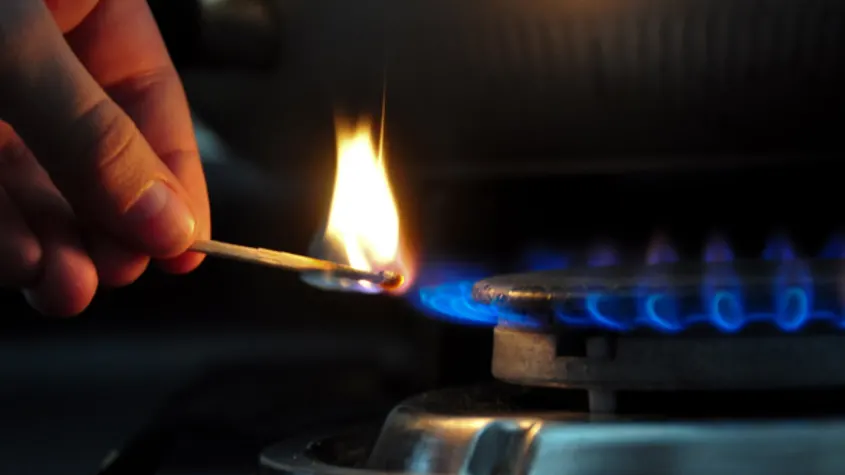Sustainability - Interventions you can do yourself to reduce your burdens
Sustainability is a catch-all term. That is, many things fall under the designation "sustainability. In these blogs we want to take you through the process of making your home more sustainable, specifically reducing energy costs, an item of our time.
By energy in these blogs we mean everything that is needed to meet the needs in the home, that is, heating, cooling, light, power, etc. So what you use while you are in the home.
Given that energy conservation is an important and, above all, profound topic on which there is much to be found, we will cover it in several blogs.
This blog is all about stopping heat loss and reducing heating costs through a number of interventions that you can easily do yourself (and without high costs).
We have seen many homes and made all kinds of observations where energy costs can be reduced with a simple intervention.
Heating, cooling and ventilation
Heating is still done with the central heating boiler in many situations. In other blogs we will further explain the type of heating and alternatives. In any case, we recommend setting the heater to 18 degrees (or lower) and using an electric heater as supplementary heating. Electricity is currently many times cheaper than gas, especially if you have PV panels at your disposal. Tune the electric stove to your needs, looking at the square footage for that. An electric heater often has an output between 1000 to 2000 watts. An example of a good supplemental heater is given below. The central heating boiler converts gas into heat in your home. This is done mostly by ignition which heats the water (closed system) in the home. This hot water flows through the radiators in the home. The radiators are heated, providing radiant heat. In many cases, the radiators are placed under windows. The reason for this is because the radiant heat blocks cold air from outside, a very practical application. You immediately experience less draught. In many new construction homes with underfloor heating, this is also a reason that people experience more drafts. There are many ways to heat your home, in most homes there will still be this type of heating. You pay for the natural gas that is burned to heat your home. We are currently living in a period where many circumstances are affecting natural gas prices, they have increased tremendously.
What can you easily do yourself without (high) additional costs?
Tip 1: Check the water pressure in the boiler, the closed system.
In the system of the boiler you will find the water pressure, it should usually be between 1.5 and 2 bar. This obviously depends on your type of boiler, so always consult the instruction manual. The danger of too low or too high water pressure is that you need more energy to heat the house. Efficiency is greatly reduced with improper water pressure. This is the simplest step you can take to save costs, make sure your water pressure is correct. There are numerous manuals and videos available on how to do this.
Tip 2: Water temperature at 60 degrees
The boiler heats water up to a certain temperature before it is delivered to the room via the radiators in the form of radiant heat. Basically, we find that boilers ex-factory are often set to too high a temperature. We recommend setting the temperature to 60 degrees. This will save you money immediately because the water does not need to be heated above 60 degrees. You will not or hardly notice this. Caution! Never go lower than 60 degrees because you will increase the risk of Legionella in the water. Troubled by Legionella? Consult an installer, this can cause dangerous situations. Want to know how to set your boiler to 60 degrees? Consult https://zetmop60.nl/
Tip 3: Sealing gaps, preventing draft problems
Do you have an old(er) home? In many cases, you lose a lot of heat because connections do not meet today's requirements. It is not for nothing that we now build differently than in the past. With window frames, glazing, doors, etc. there are large gaps that cause heat loss. There are simple solutions with which you can prevent a lot of heat loss without high additional costs, and above all, you can easily do it all yourself! If you have cracks, use compriband (swell tape) to seal these seams. This is particularly good to apply to (wooden) window frames (e.g. doors). You place the compriband in the rebate of the frame, when the door closes the space between the door and the frame is filled by the compriband. Compriband, also called swell tape, is a profile that expands to a certain thickness, usually 3 or 4 times the original thickness. For best performance, you need a compriband that adequately seals the seam. Make sure that you purchase the correct thickness, as a compriband that is too thick will have the opposite effect. You can consult the product packaging for this, which indicates the thickness up to which it can be applied. Installing compriband directly contributes to draught reduction and thus less cold air entering the house. Note that the window frame must still close completely. Otherwise flooding can occur and you will turn one problem into another.
You can also do this operation on the outside, at the connection of the frame to the masonry. The window frame is fixed in a cavity lath, which, as the name suggests, sits in the cavity of the wall. Make sure the seam between the facing brick and the frame is tightly sealed. This can prevent a lot of drafts in old(er) homes. If you don't have a cavity wall, but a brick wall, the window frame may be fixed in the masonry. In this case, it is best to seal the connection around the frame, for example by hammering or sealing it. Compriband also stops water, but it is not meant for that reason.
Another option is to seal up draft seams. In this case, we recommend using a caulking specialist. Or let us inform you which sealant you should use. There are all kinds of sealants available. It is very important to make the right choice for your purpose. If you use sealant within the framework of the window frame, have this done by a professional. It is possible that you seal parts that should not be sealed, as a result of which you cannot open a window, for example.
So in old(er) homes, crack sealing is an important issue. Note that ventilation is of great importance, even in today's construction. If there is no ventilation, the chances of mold and the like are actually much higher. This then creates an unhealthy living environment. Always make sure that you can open a ventilation grid or a window. No ventilation is absolutely not an option.
Tip 4: Heat only the rooms you actually use
As heat rises, we prefer to heat the first floor. If you have an old(er) house, chances are that the first floor is made up of wooden beams. Heat easily rises through these. In fact, the same is true with concrete floors. Only heat rooms that you actually use, turn the heater off on other rooms (off is not off, always apply frost-free of course).
If you have any questions about the above, don't hesitate and let us know. On this page you can ask the question to us.


